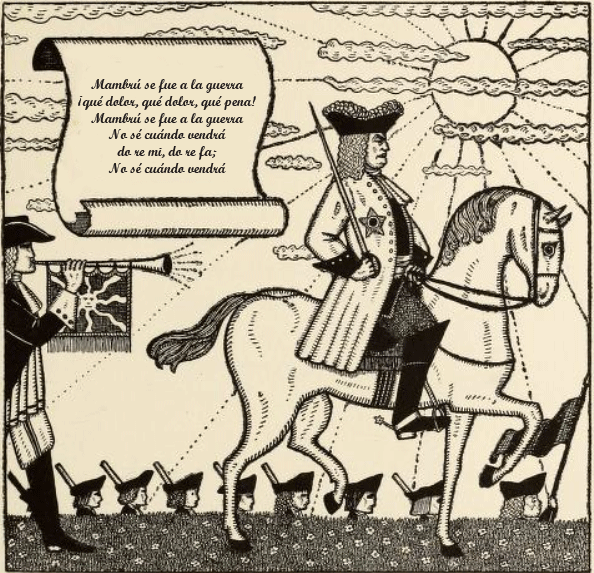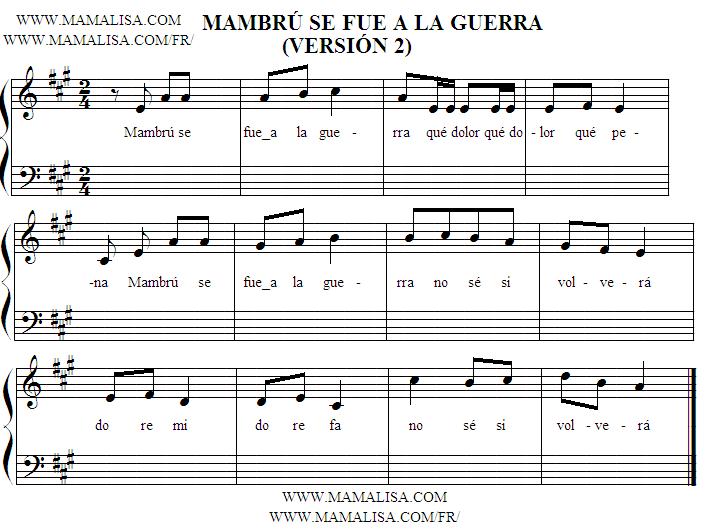Mambrú se fue a la guerra
Carlos wrote; "My father, Mr Roberto Casas is from Torreón in the state of Coahuila and my grandma used to sing it this way. It's like 'La Cucaracha' song, it has many versions."

Mambrú se fue a la guerra
Mambru Went Away to War
Canción infantil
Children's Song
(Spanish)
(English)
Mambrú se fue a la guerra
¡qué dolor, qué dolor, qué pena!
Mambrú se fue a la guerra
No sé cuándo vendrá
do re mi, do re fa;
No sé cuándo vendrá
Si vendrá para las Pascuas,
¡qué dolor, qué dolor, qué pena!
si vendrá por las Pascuas
o por la Trinidad
do re mi, do re fa;
o por la Trinidad.
Las Pascuas ya se pasan,
¡qué dolor, qué dolor, qué pena!
las Pascuas ya se pasan
también la Trinidad;
do re mi, do re fa;
también la Trinidad.
Mambru went away to war,
What sadness, what sadness, what sorrow!
Mambru went away to war,
I don't know when he'll be back.
Do re me, do re fa,
I don't know when he'll be back.
If he's back for Easter,
What sadness, what sadness, what sorrow!
If he's back for Easter
Or for Trinity Day,
Do re me, do re fa,
Or for Trinity Day.
Easter has already passed by,
What sadness, what sadness, what sorrow!
Easter has already passed by,
Trinity Day too,
Do re me, do re fa,
Trinity Day too.
Comments
Monique wrote: "Looking for some deeper information about the French version of the song, I came across the book "Notes pour l'histoire de la chanson" by V. Lespy, Librairie de J.B. Dumoulin, Paris (1861). The author Lespy starts with an anecdote about this song, that it has an Arabic origin –both the lyrics and music. The Arabic version would sing about the feats of one Mambrou. It is believed that the soldiers of James I of Aragon and Louis IX of France (Saint Louis) probably brought the song back from the crusades in the 13th century. If you know some French you can read the whole story at the link above."
According to Wikipedia, Mambru is John Churchill, the 1st Duke of Marlborough.

Thanks and Acknowledgements
Many thanks to Carlos Arturo Casas Mendoza for contributing this song. Translation by Monique Palomares and Lisa Yannucci.
Image by Michel Seviers (1920), edited by Lisa Yannucci.
¡Muchas gracias!


























